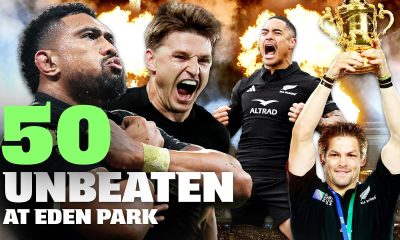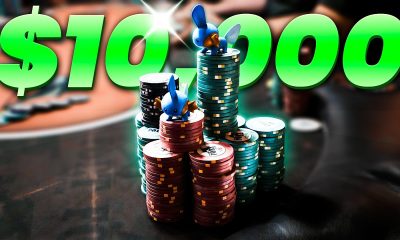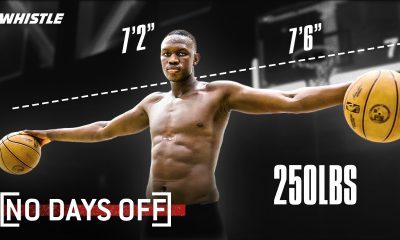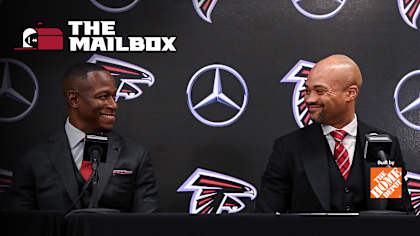Sports
Fantasy baseball
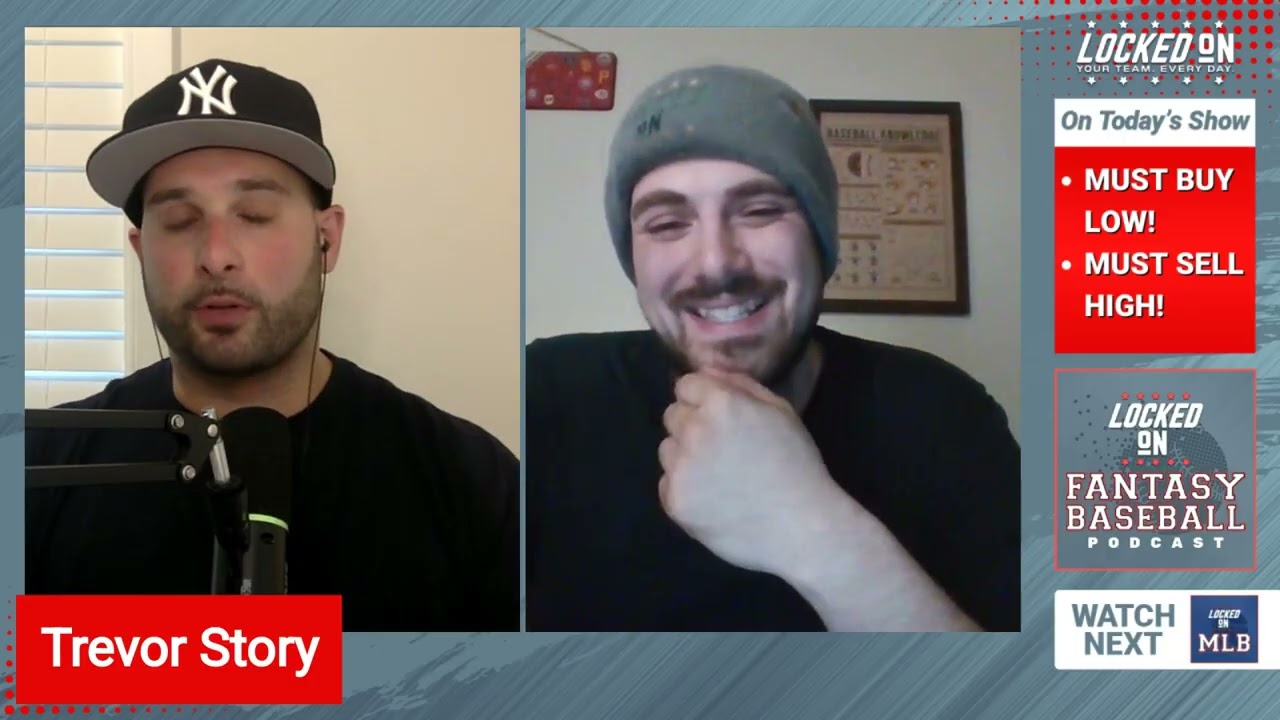
Fantasy managers may have forgotten about Arizona Diamondbacks SS/3B Jordan Lawlar, the No. 6 pick in the 2021 draft, because he struggled in his brief debut in 2023, at the “ripe old age” of 20. He then missed most of the 2024 season due to injuries and the organization’s MLB infield appears to be set. Lawlar, now 22, may be changing perceptions as he hits .356/.451/.644 at Triple-A Reno, with five home runs and 12 stolen bases over 26 games and 123 plate appearances (PA).
Play Fantasy Women’s Basketball
Fantasy Women’s Basketball is now open! Create or join a league today to get started.
• Sign up for free!
Lawlar is playing three infield positions (mostly second base) for Reno, but if he continues to hit at these rates, the Diamondbacks must find room for him. It may not be at second base, where Ketel Marte is close to returning from a hamstring injury, or at shortstop, where Geraldo Perdomo boasts a long-term contract and an impressive start to his season. Meanwhile, 3B Eugenio Suarez hit four home runs in just one game this past weekend. Still, Lawlar looks ready. Invest in the skills, expect opportunity later.
The first thing fantasy managers must do is ignore Lawlar’s brief MLB introduction, when he managed only four singles in 31 big-league at bats two summers ago, and last season’s injuries. Those are misplaced narratives. Lawlar was always going to hit, and it is unfair to call him brittle. His is not a big power profile, but a healthy Lawlar makes hard contact and should hit for average. He draws walks. He steals bases. I am a bit surprised the Diamondbacks haven’t given him reps in center field, but perhaps those will come later. Lawlar should impact the Diamondbacks and fantasy rosters this season.
Stock rising
Start a free fantasy baseball league
The 2025 fantasy baseball season is here! Get the gang back together, or start a brand new tradition.
Start or reactivate a league >>
Jac Caglianone, 1B, Kansas City Royals: The No. 6 pick in the 2024 draft, Caglianone started his first two games in right field this past weekend for Double-A Northwest Arkansas. This is potentially meaningful, because the Royals boast one of the least-productive outfields in the majors and they certainly covet power. Caglianone, who also pitched for Florida, clearly has the arm for right field. He has the power, too. None of this means Caglianone, hitting .279/.350/.488 with four home runs, debuts for the Royals this season and hits myriad home runs for fantasy managers, but adding defensive versatility is a positive sign.
Marcelo Mayer, SS, Boston Red Sox: Mayer, the No. 4 pick of the 2021 draft, is delivering an interesting power show lately, having blasted six home runs and a whopping 24 RBIs over the past nine games for Triple-A Worcester. While Mayer, 22, seems to be in a rush to reach the majors, he has only 102 PA at the Triple-A level and, Red Sox SS Trevor Story remains healthy, for now. Then again, Story has reached 400 PA in only one of the past five seasons. Nobody should be rooting for more injuries, and Story is hitting .272 with a 20/20 pace, clearly aiding fantasy managers. Just keep Mayer in mind in case opportunity arises.
Chase Burns, SP, Cincinnati Reds: Burns, the No. 2 pick in the 2024 draft, made his debut for Double-A Chattanooga this past weekend, striking out five over four solid innings while permitting just one run. Burns had made three starts at High-A, striking out 20 out of 45 hitters. Burns is one of the hardest throwers in the minors, also featuring a strong slider and curveball. He should move quickly, perhaps even debuting in the majors this summer. It all depends on his development and what is happening with Cincinnati’s rotation, as well as whether the team contends. In dynasty formats, this is a signature arm to stash.
Stock falling
Editor’s Picks
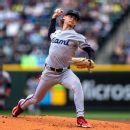
1 Related
Emmanuel Rodriguez, OF, Minnesota Twins: Rodriguez, 22, is one of the notable “three true outcomes” sluggers in the minors — known for power, walk rate and strikeout rate. Currently at Triple-A St. Paul, Rodriguez sits on nary a home run over 17 games and 78 PA, but with a 16.7% walk rate and a 34.6% whiff rate. Yeah, that strategy works only if you actually hit home runs. Rodriguez has 108 PA at the Triple-A level and barely a 50% contact rate. It is a unique profile, and investors should not run away yet, since few doubt the power potential. The Twins will make room for Rodriguez when he is ready, but it is not a great start to the season.
Hurston Waldrep, SP, Atlanta Braves: Waldrep, 23, debuted for the Braves last season but lasted only seven innings over two starts, permitting 13 earned runs for a 16.71 ERA. Walking eight hitters versus three strikeouts was a problem. The 2023 first-round pick is having trouble throwing strikes at Triple-A Gwinnett, too, with 15 walks over 22⅓ innings. He has walked four hitters in three of his past four starts. Waldrep isn’t going to be a rotation option in the majors performing this way, but there are rumors having him on the move to the bullpen, where he touches triple digits with his fastball.
Zac Veen, OF, Colorado Rockies: Veen, 23, is back at Triple-A Albuquerque after a disappointing two-week stint with the parent club, as he managed just four hits (although with a home run and double!) over 34 AB. He also struck out 14 times. Veen was better at home (.639 OPS) than elsewhere (.180 OPS), but ultimately his fantasy value will come down to him hitting line drives and stealing bases. Veen stole just one base in two chances. He also has one steal in only two attempts for the Isotopes. Many have doubts about Veen hitting enough to be a big leaguer. If he can’t steal enough bases to make the lack of other production worthwhile, then what are we doing here?
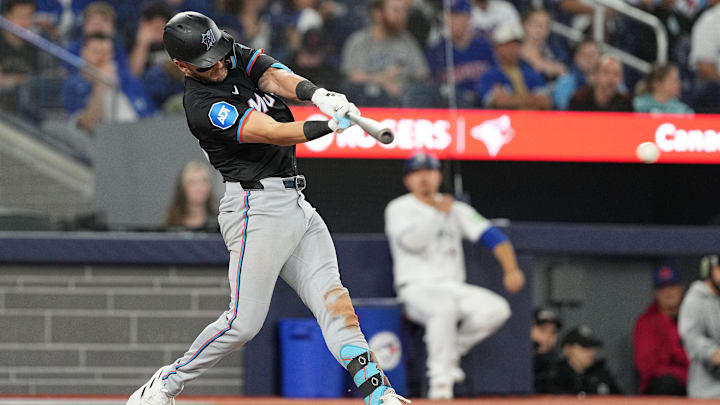
Sports
Men’s T&F Opens Season at Diplomat Open
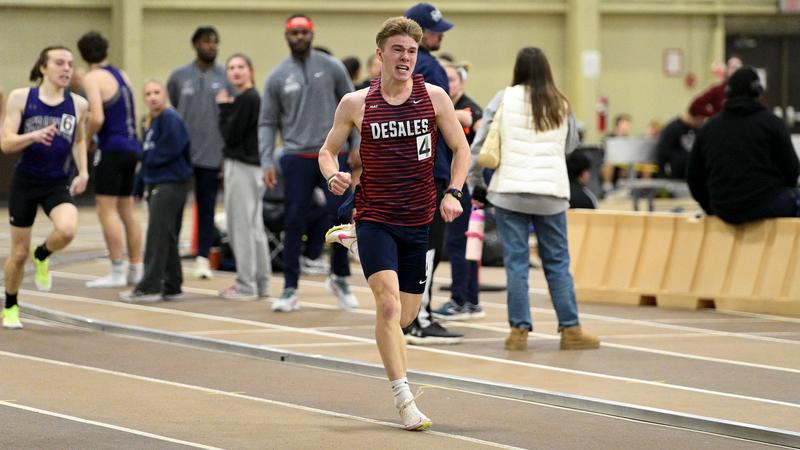
Lancaster, PA (December 6, 2025) – The DeSales University men’s track & field team opened the 2025-26 indoor T&F season competing at the Diplomat Open at Franklin & Marshall College on Friday.
The Bulldogs posted 10 MAC qualfying times/marks in the meet.
Among the qualifying times were junior Bryce Guthier taking second in the 400-meters with a time of 52.08. It is the fifth fastest time in indoor history. Senior Davis Trump also qualified in the 5K with a time of 16:20.32.
In the field events, DSU posted eight qualfying marks. Junior Weston Simak qualified for the MAC Championships in both the long jump (6.52m) and triple jump (13.72m). His triple jump mark was the second best in team history. First-year Luke Heimann also qualfied in the triple jump (11.86m).
Junior Jonathan Castronovo took home first place in the long jump with a mark of 6.58m, the second best long jump in team history.
First-year John Amoretti qualified in the shot put (12.33m), seniors Jonathan Eudja and Giovanni Wellington qualified in the weight throw with marks of 14.85m and 14.23m. First-year Ryan Rodriguez also quallified in the weight throw (11.89m).
The Bulldogs won’t return to action till the New Year at the Blue and Grey Invitational on Jan. 17th.
Sports
Women’s Track & Field Turns in Multiple High Marks to Begin Season at Cornell

RESULTS
ITHACA, N.Y. –
The Ithaca College women’s track & field team opened its 2025-26 season over the weekend as the Bombers made the short trip across town to compete in the Greg Page Relays hosted by Cornell University on December 5-6.
Lola Gitlin posted a time of 10:25.57 in the 3000-meter run to finish third overall.
Rachel Larson was a fourth place finisher with a time of 8.58 seconds in the 60-meter hurdles. That time is currently No. 1 in Division III after the opening weekend of the season.
Aynisha McQuillar took fifth in the 200-meter dash in a time of 26.61 seconds. McQuillar also ran in the 60-meter dash and posted the 11th fastest time in DIII during the prelim with a performance of 7.78 seconds.
Lyla Powers was fifth in the 500-meter dash with a time of 1:21.75.
Lily Seyfert claimed fifth in the shot put with a heave of 12.78 meters, which is currently ninth in the nation.
Bree Boyle and Erin Eastwood each cleared 3.54 meters in the pole vault, which is tied for 11th on the Division III performance list.
Alexis Brown turned in a leap of 11.02 meters in the triple jump for the 17th best mark in the country.
Ithaca is off for the remainder of 2025 and will return to Cornell on January 10 for the Southern Tier Invitational.
Sports
Men’s Track & Field Opens Indoor Season at Cornell Greg Page Relays

RESULTS
ITHACA, N.Y. –
The Ithaca College men’s track & field team opened its 2025-26 season over the weekend as the Bombers made the short trip across town to compete in the Greg Page Relays hosted by Cornell University on December 5-6.
Anik Vossschulte claimed third in the 200-meter dash in a time of 23.32 seconds, while Jacob Antilety was seventh at 23.71 seconds.
Matt Lokshin posted a time of 8.65 seconds in the 60-meter hurdles to place third in the event. Aidan Irwin took fourth in the high jump with a mark of 1.70 meters.
Quinten Lewis posted a mark of 13.73 meters in the triple jump to place fourth and Sebastien-Oliver Lacrete was sixth at 12.68 meters, while Evan Cherry secured fifth in the long jump with a leap of 6.84 meters.
IC’s 4×400-meter relay team of Damian Simmonds, Griffin Lupes, Noah McKibben and George Nilson placed sixth in 3:34.49.
Luke Ellor finished sixth in the shot put with a mark of 14.40 meters.
Three Bombers finished within the top eight in the 500-meter dash as Brad Kellogg was sixth in 1:09.73, Peter Tysiak followed in seventh with 1:10.74 and Matthew DeJulio was next at 1:11.59.
Kaiden Chandler and Luke Ferrer posted times of 4:41.29 and 4:53.44 in the mile to finish in seventh and eighth.
Raf Campanile was seventh in the pole vault with a clearance of 4.25 meters.
Ithaca is off for the remainder of 2025 and will return to Cornell on January 10 for the Southern Tier Invitational.
Sports
Women’s track and field athletes win three events at Utica Holiday Classic
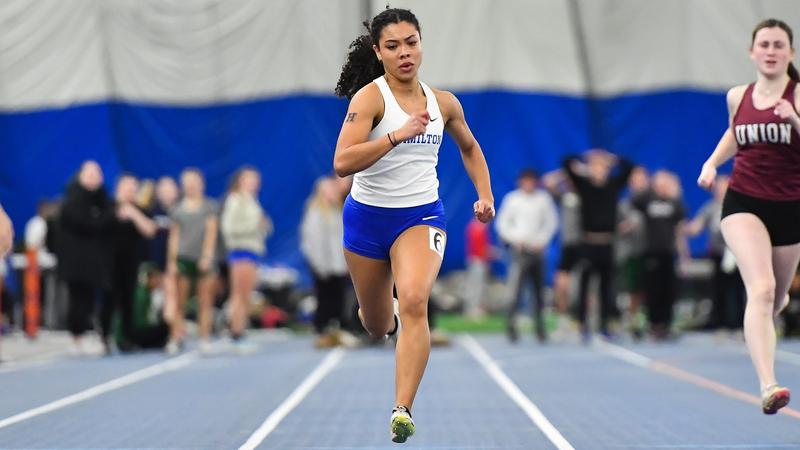
UTICA, N.Y. – The Hamilton College Continentals competed against 13 teams at the non-team scoring 2025 Utica University Track & Field Holiday Classic inside the Todd & Jenn Hutton Sports and Recreation Center on Saturday, Dec. 6.
The meet was the first of the 2025-26 season for the Hamilton women, who will be back at Utica for the Pioneers’ Winter Opener on Friday, Jan. 16 after taking a break for finals and the winter holiday.
The Continentals qualified for the 2026 All-Atlantic Region Track & Field Conference Indoor Championships in four different events and finished first in three events.
Emily Pogozelski ’26 won the 3,000-meter run by over 20 seconds with a regional-qualifying time of 10:27.93. Mackenzie Loudon ’29, who was competing in her first collegiate meet, took first place and qualified for regionals in the triple jump.
Loudon was also part of Hamilton’s winning 4×200-meter relay with Tatiana McCray ’28, Ava Chiappinelli ’29 and Marley Meyers ’28. Their performance was more than five seconds faster than the regional-qualifying time.
McCray ran a regional-qualifying 7.96 seconds and finished in second place in the 60-meter dash final. Chiappinelli also qualified for regionals in her first collegiate meet and finished right behind McCray with a time of 7.99 seconds.
TOP PERFORMANCES
300-Meter Dash (17 Runners)
4. Marley Meyers ’28, 43.08
7. Hannah Turner ’26, 43.91
60-Meter Dash (35 Runners)
2. Tatiana McCray ’28, 7.96 (PR, AARTFC)
3. Ava Chiappinelli ’29, 7.99 (AARTFC)
600-Meter Dash (16 Runners)
5. Aisha Kandji ’29, 1:47.31
4×200 Meter Relay (9 Teams)
1. McCray ’28, Mackenzie Loudon ’29, Chiappinelli ’29, Meyers ’28 (1:46.42, AARTFC)
3000-Meter Run (19 Runners)
1. Emily Pogozelski ’26, 10:27.93 (PR, AARTFC)
Triple Jump (15 Athletes)
1. Loudon, 11.29 meters (37 feet, 0.5 inches; AARTFC)
Sports
Volleyball Advances to Program’s First Sweet Sixteen, Sweeps Florida Saturday
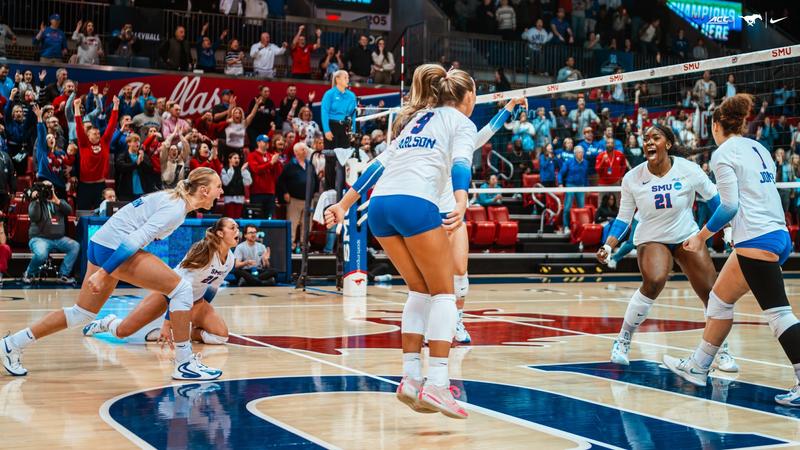
DALLAS (SMU) – For the first time in program history, SMU volleyball is headed to the Sweet Sixteen after sweeping Florida (16-12) in the Round of 32 on Saturday with set scores of 25-11, 25-21, 26-24.
With the win, SMU won its 27th match of the season, tying the program record for single-season wins. It also gave coach Sam Erger her 100th victory at SMU and in her Division I head coaching career.
Averi Carlson dished out 38 assists, the most in a three-setter for the senior setter this season. Carlson led the Mustangs to a .370 hitting percentage in the win. Kennedi Rogers went for 14 kills, hitting .440, with four digs and three blocks. Malaya Jones closely trailed Rogers with 13 kills, eight digs and seven blocks, tying her career high.
SMU out-blocked the Gators 15-4, spearheaded by a career-high nine blocks from freshman Maggie Croft. The Mustangs’ blocking efforts helped hold the Gators to a .156 hitting percentage for the match.
MATCH NOTES
- With 13 kills against Florida, Jones (503) is now the second player in SMU Volleyball history to reach 500 kills in a season. She joins Rachel Giubilato, who notched 568 kills in 2006.
- Averi Carlson (1,341) moved to third in the rally scoring era and sixth all-time for single-season assists at SMU.
- Jones reached the double-digit kill mark for the 26th time this season and for the ninth straight match.
- Rogers recorded double-digit kills for the sixth time this season.
- It marked Schilling’s 22nd time in double-figures this season and her fifth straight.
- With six blocks against the Gators, Anyanwu draws within 14 of breaking the program record for most blocks in a season. (188 by Janelle Giordano in 2015)
- SMU had double-digit blocks (15) for the 17th time this season and for the second straight match.
- SMU has won 20 of its last 21 matches and its 12th straight.
- The Mustangs end the 2025 season with 15 wins at Moody Coliseum, tying the program record for most in a season.
- The win marks the Mustangs’ 15th sweep, 11th at home this season.
HOW IT HAPPENED:
SMU controlled the first set from start to finish in all phases of the game. SMU hit .483 with no errors on 29 swings in the first, while holding Florida to a .000 hitting percentage. Rogers put in five kills to lead the Mustangs, who got point production from six different players to help propel them to a 25-11 set one victory. SMU commanded the net with a 5-0 advantage in blocks.
Down four (16-12) in the second frame, SMU responded with five straight points on a run that included two aces from Madison Scheer. After trading points, SMU went on a 4-0 run to pull away in the frame. The Mustangs went on to win the frame 25-21.
Tied 20-20 entering the red zone of the third set, SMU got the first two points on an ace from Carlson and a block from the freshman tandem of Rogers and Croft. Despite a 3-1 run by Florida that put the Gators at set point first, the Mustangs responded with three straight to close the match, ending the frame with their sixth block of the set to win 26-24.
SMU LEADERS:
SMU Kills Leader: Kennedi Rogers (14)
SMU Assists Leader: Averi Carlson (38)
SMU Digs Leader: Jordyn Schilling (11)
SMU Blocks Leader: Maggie Croft (9)
SMU Ace Leader: Madison Scheer (2)
SMU Points Leader: Malaya Jones (17.5)
Up Next: SMU will get a rematch with No. 3 seed Purdue in the NCAA Regional Semifinal on Thursday evening in Pittsburgh, Pa.
Sports
Trans volleyball player Blaire Fleming hits back at claim about female teammate’s eating disorder

Transgender college volleyball player Blaire Fleming has hit back at claims that she triggered her teammate’s eating disorder due to emotional distress — and said that she doesn’t “feel bad for her.”
Fleming, 23, was at the center of a scandal last year involving Brooke Slusser, who filed multiple lawsuits against her San Jose State University (SJSU) teammate after discovering that she was transgender.
Slusser alleged that the panic and stress from that period of her life led her to develop an eating disorder, leading to anorexia so severe that her menstrual cycle stopped for nine months.
The pair had previously shared hotel rooms and changing spaces for a whole season in 2023 before Slusser said she found out that Fleming, who is biologically male but reportedly started medically transitioning at 14, was trans.
“From the stress and how anxious I was every single day, I just wasn’t eating really at all,” Slusser told Fox News Digital last week.
“I went from around 160 to 128 [lbs] in that one semester. It definitely isn’t healthy for someone of my size to be that weight, and I ended up losing my menstrual cycle for nine months. So it was definitely severe,” she said.
Slusser later dropped her classes in the final semester this past spring, citing constant in-person harassment by students who opposed her stance.
Fleming has since responded, claiming that Slusser’s eating disorder dated back for as long as she knew her, prior to her learning that she was trans.
“She’s been anorexic and struggled with food since I’ve known her aka since 2023. She literally would weigh herself 2-3x a day and keep track of it on her whiteboard in her room,” Fleming told Fox News Digital on Sunday.
“So I really don’t care or feel bad for her. And she didn’t drop her classes, she failed out, hope that helps!” Fleming said.
Slusser has now come back and disputed Fleming’s allegations.
“These statements are just not true. I have always lived a very healthy lifestyle. Before these events took place I was very disciplined in fueling myself for athletics and [kept] track to make sure I was where I need to be to be the best athlete,” Slusser told Fox News Digital.
“It wasn’t until all the craziness started that my healthy lifestyle turned very unhealthy into not eating the amount I should,” Slusser said.
“As for school, I decided to stay home after fall 2024 to better myself and heal. So no, I did not return to San Jose and enroll myself in more courses at an institution that didn’t have my best interest,” she added.
Slusser alleged that she was never told Fleming’s birth sex and said the two regularly shared hotel rooms on away trips, according to her lawsuits filed against the NCAA and Mountain West Conference.
Fleming allegedly requested to be roomed with Slusser, a request she said was granted by team leadership, according to lawsuits.
Slusser said that the 6ft1 Fleming confessed to being transgender during a conversation over ice cream with another teammate in April 2024.
In September 2024, Slusser joined swimmer Riley Gaines’ lawsuit against the NCAA.
At the same time, SJSU’s volleyball team saw a series of forfeits by opposing teams, with police protection regularly assigned.
The US Department of Education is currently investigating SJSU for potential Title IX violations.
-
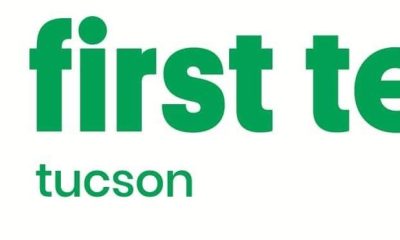
 Rec Sports2 weeks ago
Rec Sports2 weeks agoFirst Tee Winter Registration is open
-

 Rec Sports2 weeks ago
Rec Sports2 weeks agoFargo girl, 13, dies after collapsing during school basketball game – Grand Forks Herald
-

 Motorsports2 weeks ago
Motorsports2 weeks agoCPG Brands Like Allegra Are Betting on F1 for the First Time
-

 Sports3 weeks ago
Sports3 weeks agoVolleyball Recaps – November 18
-

 Motorsports2 weeks ago
Motorsports2 weeks agoF1 Las Vegas: Verstappen win, Norris and Piastri DQ tighten 2025 title fight
-

 Sports2 weeks ago
Sports2 weeks agoTwo Pro Volleyball Leagues Serve Up Plans for Minnesota Teams
-

 Sports2 weeks ago
Sports2 weeks agoUtah State Announces 2025-26 Indoor Track & Field Schedule
-
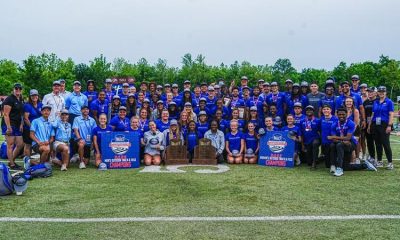
 Sports2 weeks ago
Sports2 weeks agoSycamores unveil 2026 track and field schedule
-

 Motorsports1 week ago
Motorsports1 week agoRedemption Means First Pro Stock World Championship for Dallas Glenn
-
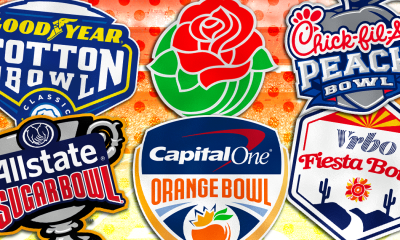
 NIL7 days ago
NIL7 days agoBowl Projections: ESPN predicts 12-team College Football Playoff bracket, full bowl slate after Week 14




